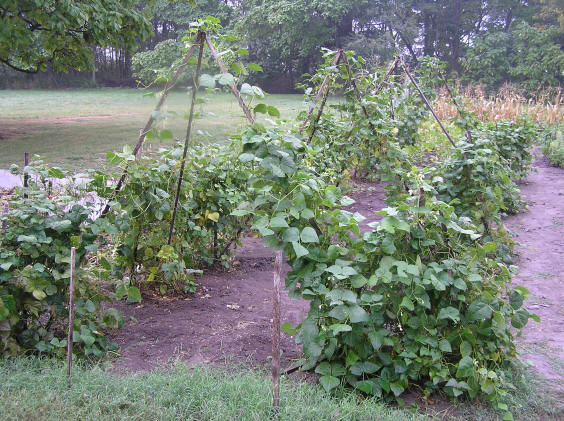Faith Peterson
Adams County Master Gardener
Vegetable gardening was once thought boring, and only practiced by the poor, or those who lived in rural areas. Today, all that has changed and vegetable gardening is becoming popular across the country.

Besides the obvious advantage of harvesting fresh food as you want to use it, people are more interested in knowing how their produce has been grown. Awareness of the obesity problem in America, especially in children, reinforces the basic 'eat your vegetables and fruits' that our mothers preached.
What easier way to get kids' attention than to involve them in the planning and working of a vegetable garden?
Gardeners today are reclaiming part of their high cost lawns as planned veggie beds and landscaped areas with vegetables growing among the perennials; blueberries and raspberries as background plants; and floral and vegetable annuals planted alongside herbs. The traditional backyard garden patch is
still popular, but not the only way to go.
Many veggie gardeners utilize containers, from pots and tubs on patios, to larger raised beds. These practices provide the extra space that some people need; and also offer the option of growing vegetables in a more perfect soil. The better soil allows for planting closer together, and maximizing
space.
If you are new to vegetable gardening, or if you have not had a garden recently, you might ask "What do I do first?" Winter allows us time to peruse seed catalogs, and to develop the all important garden plan. Ask your family - who will do the work? What vegetables will be eaten? How will the
produce be used - fresh, canned, frozen? The answers to these questions will provide your garden plan.
Next think about your site. The traditional garden patch should receive 8 or more hours of sun - or a minimum of 6 hours sun per day. The patch should be near a water source, and handy to get to from the kitchen.
The third item to consider is your soil. Should it be amended? The importance of a soil test - available for sale at the Penn State Extension Office - cannot be overlooked. And the fourth consideration - will you use seeds or transplants or a combination. Many vegetables such as peas and beans do
best when planted from seed. Tomato and pepper plants are often purchased as transplants.
Especially useful in planning a garden is to refer to the Journal you kept in the previous year. Notes can be made on a wall calendar throughout the growing season, and compiled on one sheet at the end of the gardening season. It is helpful to include planting dates, rainfall, pest problems, harvest
dates, fall planting dates, and how much food was picked and processed, as well as a plot plan showing what was planted where.
Read other articles on growing herbs or vegetables